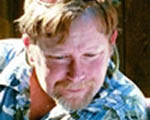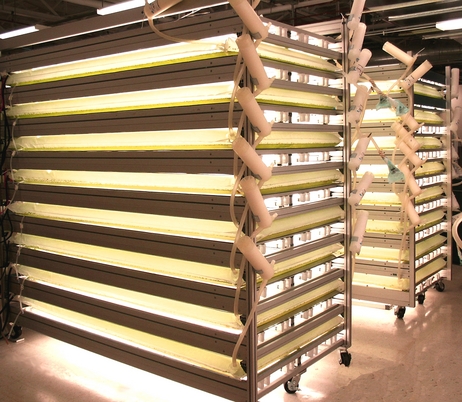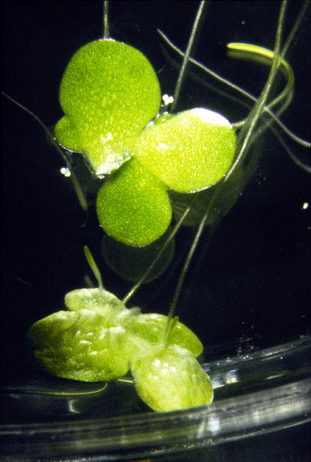Full Circle
Keith Everett , United States I think innovation attracted me because of the fact that you are constantly and passionately engaged in what you are doing and you have an implied and expected responsibility to make things better than they were before
I think innovation attracted me because of the fact that you are constantly and passionately engaged in what you are doing and you have an implied and expected responsibility to make things better than they were beforeMy Mother was an Artist and my father was an electrical engineer. From this yin and yang type parenting structure I learned that there were many ways of looking at any issue and differences in thinking and preferences are unavoidable, necessary, and valuable. I don't mean to say that this was a harmonious arrangement because, in truth, often my environment growing up was chaotic and bewildering. This prepared me, I think, for the type of environment that many innovations arise from, however. Conflicting input, layered criteria, and volatile expectations as to outcomes are all part of a truly innovative environment. It cannot be helped, in most cases. When I explain my background to those that know me, the response is often, "well, that explains a lot..."
While I was a senior in high school in the early 70s, I attended the state science fair and won a botany award with a science project I completed evaluating the health of duckweed populations in various stages of overcrowding.
I have found that most do not know what Duckweed is -- and those who do will probably know it as an obscure aquatic plant that is often referred to as "pond scum." However, Duckweed or Lemna sp. as it's known in scientific circles, has attributes that make it of considerable value in the biotech continuum of economically viable plant pharmaceutical production systems. These critical attributes are rapid growth rate (they can double their biomass in 36hours), and very high intracellular protein content (one of the highest in the plant kingdom).
It was bound to happen that eventually someone would hit on the biotech application possibilities for this species of plant. And, in 1999 Biolex Incorporated was formed with the central goal of capitalizing on duckweeds' naturally extreme growth rate and unusually high protein concentration as a source for value added pharmaceutical compounds. Unfortunately, no one had attempted to grow a small, floating aquatic plant in the rigidly controlled and documented FDA regulated environment previously, so there was no equipment or material out there that, as it was, could be readily applied to implement an industrial scale production process for our novel platform.
Creating the changes in genetic code necessary to produce pharmaceutical compounds from a plant is typically a shotgun sort of process where you randomly create hundreds of transformants and then screen for the one producing the correct compound in the correct configuration with an economically viable concentration.
This involves a lengthy, labor intensive process whereby bits of tissue are treated in various solutions and grown out for months on agar plates until they are at a stage where they can be assayed for the presence of the compound of interest. Nutrient depletion in the agar plates, under the best conditions, is complete in two weeks or so and the tissue must be transferred to new plates with fresh media to continue their growth cycle. With 15 to 50 pieces of tissue per plate, if you consider thousands of pieces of plant tissue transferred every two weeks; that's a lot of work, even if you consider just one project. Usually, our small research group had multiple projects in process at once, further adding to the work load.
Already having experience with plant tissue culture from my college years, it was clear what the bottle necks were in our line creation/screening process. In response to these and the huge workload, I came up with a new multi-well plate that would allow the tissue to remain in one vessel or well for the entire incubation term.
Each well had two access ports and a frit support for allowing tissue contact with the life sustaining media. Instead of bringing the media to the tissue, using modified TECAN liquid handler technology, I brought the tissue to the media. At intervals, the spent media could be sucked out of porous substrate (frit) and replaced with a slightly modified automated liquid handler.
The idle plates were kept in novel multi well "hotels" with each hotel site fitted with an array of LEDs to support light dependent processes within the tissue, such as photosynthesis. I designed one version to be a hotel and elevator system that would hold hundreds of plates in a temperature controlled LED lit environment. As needed the plates would be delivered to the liquid handler and the old media would be removed and fresh media supplied.
The plate would then be returned to the hotel. During the "feeding" the plates could be photographed by a networked digital camera on the liquid handler arm. These photographs would be stored on our company server so researchers interested in seeing how their experiments were progressing could call up the photographs and make choices regarding harvesting, media changes, and discarding with respect to the plate in question. A bar code reader on the liquid handler would keep the pictures organized according to plate record files. At any time, a researcher would be able to go to a computer terminal and request the robot to retrieve a specific plate, photograph it, harvest it, etc., and then the automated processes would continue where they left off.
This system would eliminate hundreds of man hours per month and reduce costs proportionally. There were no major automation technology breakthroughs needed. The innovations were a modifications of existing technology that produced an unparalleled system applicable to any biotechnology process creating recombinant proteins in plants.
As is the case in most of my innovation I am working toward a "process" innovation that will be facilitated by or coupled to discrete hardware innovations. This is the greatest return for the least investment. We currently hold patents on the plate design, the LED hotels and other aspects of this system. I didn't know this at the time but the experience was preparing me for the next much larger challenge of creating an industrialized production system for the growth and control of duckweed in an FDA regulated process--from the ground up. This proved to be one of the largest challenges I've ever faced.
Anyone familiar with GMP and FDA regulation is aware of the difficulties associated with new drug applications and pharmaceutical manufacturing; even if the production system used is well proven and industry standard (read: familiar to the FDA). One must prove the production system compliant, and that it is controlled and in control. I could see that given the rigid requirements for environmental control required not only for genetically modified organisms but pharmaceutical processes creating medicines for injecting into humans, this was not going to be a "greenhouse" project.
However, we had an idea to capitalize on duckweeds ability to make large amounts of target pharmaceutical proteins cheaply and quickly, compared to the current state of the art. However, to do this successfully, we needed an entirely new system and we would be building it from scratch.
At Biolex, our approach was so far off the beaten pharmaceutical production path that we had no readily available means to industrialize our "hobby scale" bench top process. The added challenge was succeeding at scaling the process without breaking the bank and loosing our potential advantage of simplicity, containment, and range of target proteins under a blanket of insurmountable cost. In the end, parts of the process development were similar to what some developers go through when creating a new aircraft design....
Suffice it to say that in the journey from a simple idea to a functioning industrial biotechnology based pharmaceutical manufacturing process, I learned a lot. This could be a very long story because I have become so familiar with all the details of duckweed growth optimization, recombinant protein production, the FDA, pharmaceutical development criteria, and physical laws governing air flow, minimal structural design, heat removal, CAD, Computational fluid dynamics, and light source optimization.
All of these played a part in our success and being an expert in one of these fields would have actually been counter productive for succeeding at the rest and integrating it all into a working system. Considered "upstream" research and development; designing and implementing a process to manufacture pharmaceuticals with the duckweed platform, involved a great deal of details that forced me to pull from virtually all my experience in science in engineering, not to mention every day life, observing wave action at the beach, and designing remote control aircraft.
As with the robotic tissue culture system, the end result was a process completely unique that used existing concepts in completely new ways. The disposable production vessels, the carefully designed and lightweight production racks, the biological air supply system, and the means to separate the very sticky "non-Newtonian-like" plant biomass from the liquid media all required new approaches to combining and implementing tangenial technologies.
These novel combinations have resulted in a number of patents as did the approaches used with the automated tissue culture system. In the end, I had an economical process of complete novelty that the FDA actually likes and may one day produce cheaply and unerringly the medicine you may one day take to enhance the quality of your collective lives. I hope so.
So, what I thought was a simple science project as a young kid turned out to be a preface for some of the greatest efforts in my life. Looking back, I was unknowingly creating the groundwork for a monumental effort that I could never have imagined.
Next Story »


